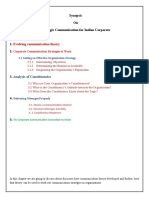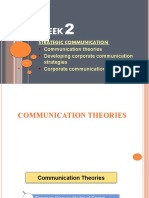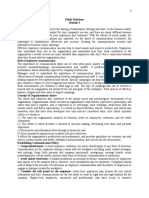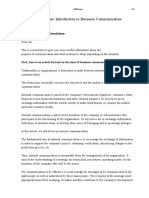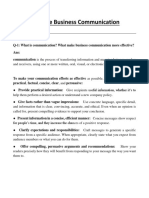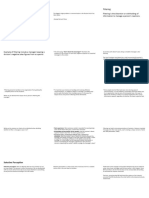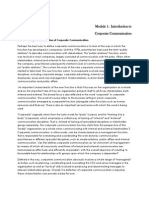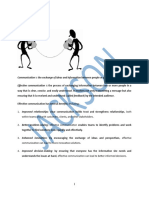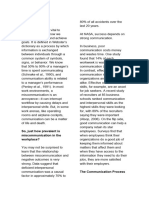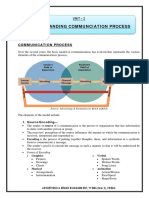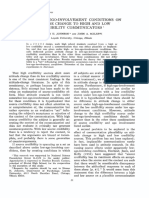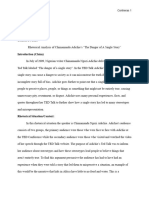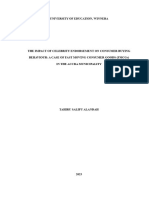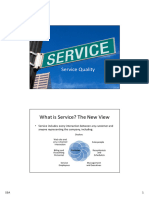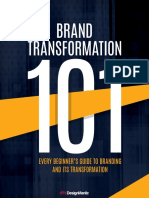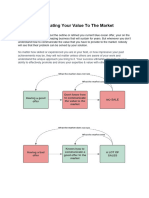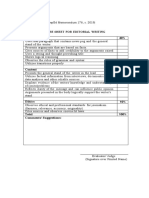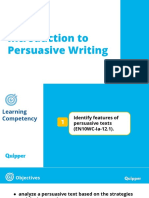0% found this document useful (0 votes)
14 views6 pagesTutorial 2 - Individual (Communication Strategies)
The document discusses the importance of strategic communication in corporate settings, outlining key components such as objectives, resources, and reputation diagnosis. It highlights the communication challenges faced by Carson Company due to its decentralized approach, leading to inefficiencies and a lack of engagement among stakeholders. Recommendations for improvement include fostering relationships, diversifying communication methods, and involving managers in policy development to enhance understanding and commitment.
Uploaded by
Vy TườngCopyright
© © All Rights Reserved
We take content rights seriously. If you suspect this is your content, claim it here.
Available Formats
Download as DOCX, PDF, TXT or read online on Scribd
0% found this document useful (0 votes)
14 views6 pagesTutorial 2 - Individual (Communication Strategies)
The document discusses the importance of strategic communication in corporate settings, outlining key components such as objectives, resources, and reputation diagnosis. It highlights the communication challenges faced by Carson Company due to its decentralized approach, leading to inefficiencies and a lack of engagement among stakeholders. Recommendations for improvement include fostering relationships, diversifying communication methods, and involving managers in policy development to enhance understanding and commitment.
Uploaded by
Vy TườngCopyright
© © All Rights Reserved
We take content rights seriously. If you suspect this is your content, claim it here.
Available Formats
Download as DOCX, PDF, TXT or read online on Scribd
/ 6
